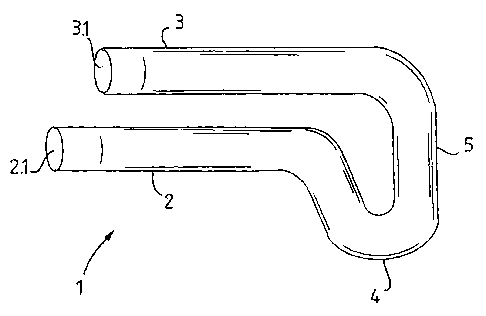Une partie des informations de ce site Web a été fournie par des sources externes. Le gouvernement du Canada n'assume aucune responsabilité concernant la précision, l'actualité ou la fiabilité des informations fournies par les sources externes. Les utilisateurs qui désirent employer cette information devraient consulter directement la source des informations. Le contenu fourni par les sources externes n'est pas assujetti aux exigences sur les langues officielles, la protection des renseignements personnels et l'accessibilité.
L'apparition de différences dans le texte et l'image des Revendications et de l'Abrégé dépend du moment auquel le document est publié. Les textes des Revendications et de l'Abrégé sont affichés :
| (12) Demande de brevet: | (11) CA 2391057 |
|---|---|
| (54) Titre français: | ATTACHE DE FIXATION DE VOIE FERREE |
| (54) Titre anglais: | RAILWAY FASTENING CLIP |
| Statut: | Réputée abandonnée et au-delà du délai pour le rétablissement - en attente de la réponse à l’avis de communication rejetée |
| (51) Classification internationale des brevets (CIB): |
|
|---|---|
| (72) Inventeurs : |
|
| (73) Titulaires : |
|
| (71) Demandeurs : |
|
| (74) Agent: | LAVERY, DE BILLY, LLP |
| (74) Co-agent: | |
| (45) Délivré: | |
| (86) Date de dépôt PCT: | 2000-11-10 |
| (87) Mise à la disponibilité du public: | 2001-05-17 |
| Licence disponible: | S.O. |
| Cédé au domaine public: | S.O. |
| (25) Langue des documents déposés: | Anglais |
| Traité de coopération en matière de brevets (PCT): | Oui |
|---|---|
| (86) Numéro de la demande PCT: | PCT/ZA2000/000212 |
| (87) Numéro de publication internationale PCT: | ZA2000000212 |
| (85) Entrée nationale: | 2002-05-09 |
| (30) Données de priorité de la demande: | ||||||
|---|---|---|---|---|---|---|
|
L'invention concerne une attache de fixation de voie ferrée servant à fixer un rail, qui comporte un élément (1) allongé, formé de manière à comporter une première branche (2) longitudinale; une deuxième branche (3) longitudinale, les branches étant connectées de manière résiliente à une extrémité de l'élément; et une structure (4) en forme d'oreille s'étendant transversalement au-delà de la première branche.
A railway fastening clip for securing a rail comprises an elongate member (1),
formed so as to consist of a first longitudinal leg (2), and a second
longitudinal leg (3), the legs being resiliently connected at one end of the
member, and an ear formation (4) extending transversely beyond the first leg.
Note : Les revendications sont présentées dans la langue officielle dans laquelle elles ont été soumises.
Note : Les descriptions sont présentées dans la langue officielle dans laquelle elles ont été soumises.

2024-08-01 : Dans le cadre de la transition vers les Brevets de nouvelle génération (BNG), la base de données sur les brevets canadiens (BDBC) contient désormais un Historique d'événement plus détaillé, qui reproduit le Journal des événements de notre nouvelle solution interne.
Veuillez noter que les événements débutant par « Inactive : » se réfèrent à des événements qui ne sont plus utilisés dans notre nouvelle solution interne.
Pour une meilleure compréhension de l'état de la demande ou brevet qui figure sur cette page, la rubrique Mise en garde , et les descriptions de Brevet , Historique d'événement , Taxes périodiques et Historique des paiements devraient être consultées.
| Description | Date |
|---|---|
| Demande non rétablie avant l'échéance | 2005-11-10 |
| Le délai pour l'annulation est expiré | 2005-11-10 |
| Réputée abandonnée - omission de répondre à un avis sur les taxes pour le maintien en état | 2004-11-10 |
| Lettre envoyée | 2004-05-27 |
| Exigences de rétablissement - réputé conforme pour tous les motifs d'abandon | 2004-05-17 |
| Réputée abandonnée - omission de répondre à un avis sur les taxes pour le maintien en état | 2003-11-10 |
| Lettre envoyée | 2002-11-07 |
| Inactive : Page couverture publiée | 2002-10-29 |
| Inactive : Notice - Entrée phase nat. - Pas de RE | 2002-10-18 |
| Demande reçue - PCT | 2002-08-06 |
| Inactive : Transfert individuel | 2002-08-01 |
| Exigences pour l'entrée dans la phase nationale - jugée conforme | 2002-05-09 |
| Exigences pour l'entrée dans la phase nationale - jugée conforme | 2002-05-09 |
| Demande publiée (accessible au public) | 2001-05-17 |
| Date d'abandonnement | Raison | Date de rétablissement |
|---|---|---|
| 2004-11-10 | ||
| 2003-11-10 |
Le dernier paiement a été reçu le 2004-05-17
Avis : Si le paiement en totalité n'a pas été reçu au plus tard à la date indiquée, une taxe supplémentaire peut être imposée, soit une des taxes suivantes :
Les taxes sur les brevets sont ajustées au 1er janvier de chaque année. Les montants ci-dessus sont les montants actuels s'ils sont reçus au plus tard le 31 décembre de l'année en cours.
Veuillez vous référer à la page web des
taxes sur les brevets
de l'OPIC pour voir tous les montants actuels des taxes.
| Type de taxes | Anniversaire | Échéance | Date payée |
|---|---|---|---|
| Taxe nationale de base - petite | 2002-05-09 | ||
| Enregistrement d'un document | 2002-08-01 | ||
| TM (demande, 2e anniv.) - petite | 02 | 2002-11-12 | 2002-11-05 |
| Rétablissement | 2004-05-17 | ||
| TM (demande, 3e anniv.) - petite | 03 | 2003-11-10 | 2004-05-17 |
Les titulaires actuels et antérieures au dossier sont affichés en ordre alphabétique.
| Titulaires actuels au dossier |
|---|
| MATTHYS, PRETORIUS STRYDOM |
| Titulaires antérieures au dossier |
|---|
| ANDRE CORNELIUS WEBER |
| MARIUS SIGFRIED STRYDOM |